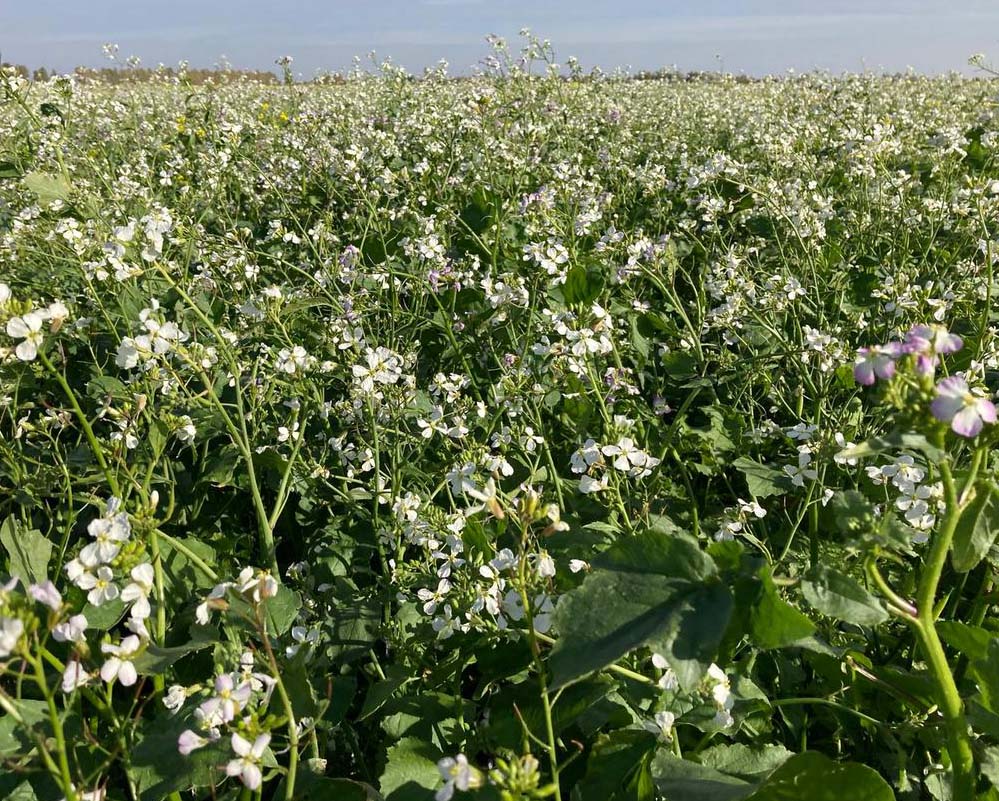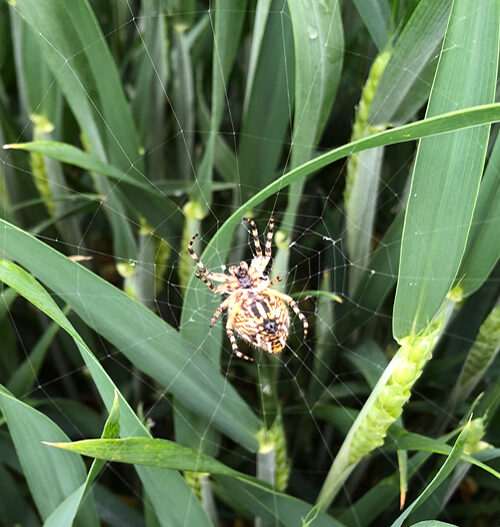Principles of regenerative agriculture
Regenerative farming practices focus on restoring and enhancing soil health and the soil food web. Unlike conventional agriculture, this approach is built on a collection of principles designed to restore the farming ecosystem.
While regenerative farming is increasingly acknowledged for its environmental and agricultural benefits, it lacks a standardised regulatory framework. This makes it open to individual interpretation amongst farmers who claim to be “regenerative”.
This subjectivity can sometimes lead to ambiguity, especially for stakeholders, customers and consumers trying to understand what regenerative farming is. This uncertainty can affect decisions on investing in or buying products from regenerative farming practices.
In response to this challenge, Ingleby Farms is committed to maintaining transparency about our use of regenerative farming techniques. We recognise that we are on a journey of continually learning and adaptation.
Our goal extends beyond merely applying these principles across our farms; but we also share our learnings. Through sharing, we wish to enhance the understanding of regenerative farming in large-scale agriculture, and thereby contribute to an acceleration of the green transition within farming.

Regenerative agriculture includes a broad range of principles. Many of the principles are complementary and overlapping. At Ingleby Farms, we focus on 6 core principles of regenerative farming. We have selected them based on their potential for positive impact, which we have learned from research and practical knowledge. Below we will describe the principles we prioritise.
Principle 1: Limited soil disturbance
Nature did not intend for the soil to be dramatically disturbed by being flipped upside-down. Regular tilling harms the soil structure along, its living organisms and networks of nutritional exchange. These networks between microorganisms and plant roots are crucial for natural soil fertility. They lay the foundation for farming with less synthetic pesticides and fertilisers.
By minimising or eliminating tillage, we create a rich environment for a diverse range of soil life. Beneficial fungi and insects will thrive. This biodiversity supports a robust underground ecosystem.
The number of earthworms in the soil is dramatically reduced by tillage. Earthworms play a crucial role because they enrich the soil with recycled organic material, and they loosen, aerate and improve the soil’s drainage capability. We regularly check for earthworms in our fields because they are an important indicator of soil health.

In the 2022/23 season we managed 40,944 hectares of arable crops. Out of this, 54% was farmed without tilling, and 35% used minimum tillage methods. We define minimum tillage as methods that merely slice the soil or turn only the top 0-10 cm (0-4 in). This is different from traditional tilling, which turns the soil at depths of 12-251 cm (5-10 in), significantly affecting the soil structure and soil health.
Currently (2024), we use conventional tilling on 11% of our farmland. We do this for several reasons. For instance, we must balance our goal of reducing tillage and our goal to phase out synthetic pesticides. This is challenging. Abruptly eliminating both, just to claim we achieved these goals, would create a ‘land of milk and honey’ for weeds. This would significantly impact the crop yield and is not a sustainable business model.
To address this challenge, we must meticulously integrate regenerative methods and gradually eliminate the need for tilling and spraying against weeds. For instance, we practice crop rotations with a variety of crops, and we utilise cover crops and companion planting.
Principle 2: Increase crop diversity
Diversification of crops is essential to both soil health and crop health. When the same crop is grown season after season there is an increased risk of soil depletion as well as increased likelihood of pest infestations targeting the crop.
By planting varied crop rotations and companion crops we can create a rich habitat for soil biology. Each plant species contributes with unique root structures, leaves various types of residues and secretes distinct root exudates. This supports a wide range of soil organisms, thereby enhancing biodiversity and soil fertility in our fields.
Another important factor is the crop’s ability to sequester carbon in the soil. Some crops have an increased ability to sequester more atmospheric carbon3 4, which improves the soil quality through added soil organic carbon and has the potential to offset carbon emissions.
Certain crops, such as legumes, are known for their ability to fix atmospheric nitrogen. Some legumes release considerable amounts of nitrogen into the soil. Both directly through their roots and indirectly when the residue decomposes. This ability curtails the need for synthetic fertilisers5.
Incorporating diverse crop rotations also prevents the build-up of unwanted soil biology, including pests and pathogens. It lowers the probability of crop infestations by pests, thereby reducing the need for insecticides and fungicides.
Given the lack of detailed, documented trials in regenerative farming techniques, we dedicate ourselves to carrying out our own trials. This involves investing time and resources in selecting crops and testing different cropping systems. We explore various combinations of crops to optimise both environmental benefits and agricultural productivity. Each trial we undertake is thoroughly evaluated to assess its potential for large-scale application.
Since 2016, we have been testing the benefits of adding more species into our crop rotations in Latvia and Lithuania. Since then, we have gone from keeping 6-7 crops in our rotation to 15-16 crops.
The idea behind adding so many different crops is to take advantage of all the different attributes that each species contributes to.
Extending the number of species in a crop rotation has the potential to significantly reduce the risk of diseases catching on to our crops, along with reducing the need for synthetic fertilisers.

Principle 3: Armouring the soil
Armouring the soil protects it from wind and water erosion. We amour our fields by planting cover crops and we leave residues from prior crops on the soil surface.
Crop residue also shades the soil from the sun, helping to keep soil temperature stable. As an added benefit, it serves as food for soil organisms and improves the soil structure when incorporated into the soil.
Keeping the soil covered also works as a natural weed suppressor. By having our seeded crops to occupy the ground space and by leaving plant residue on the fields, we prevent bare soil patches where weeds could grow. We carry out tests in our fields where we mix several crop species in varied ratios, aiming to leave as little space as possible for weeds.
Principle 4: Maintaining living roots year-round
Soil is most productive when soil microbes have access to living plants. The conversion of sunlight, CO2 and water into sugar and oxygen, known as photosynthesis, takes place through the plants. The plants feed sugars to the soil organisms, which in return produce minerals and nutrients available to the plants. Promoting this symbiotic relationship increases the chances of growing resilient and healthy crops.
The more plants that continuously feed the soil microbiology, the healthier the soil. Therefore, instead of solely growing cash crops on our fields, which can only be done for part of the year, we also grow cover crops.
These are seeded after harvest and prolong the period s have a green cover and living roots. This also has the benefit of prolonging the time where carbon is removed from the atmosphere and stored in the soil as soil organic carbon.
Principle 5: Integrating livestock
When well-managed, the integration of livestock and grazing can benefit the soil. Animals can help fertilise the soil with their droppings, stimulate plant growth and improve soil carbon.
Dung from livestock in pastures and fields creates temporary hotspots in earth-worm activity. Beneath these dung patches, the number of earthworms can increase up to four times, leading to deeper burial of nutrients into the soil profile. Dung also attracts beneficial insects like the dung beetles. They are an indicator of a healthy and productive land. They improve the soil quality and ultimately the production capacity of the land.
Dung beetles search out and bury the highest nitrogen portions of dung deep into the soil profile. The beetle larvae consume up to half of the dung, leaving the rest to feed above and below ground organisms. This builds up soil carbon and creates a rich humus.
Similar to earthworms, the tunnels from dung beetles aerates the soil, improves water infiltration and storage and increases the water available for plants.

Keeping animals present in the fields is a fundamental aspect when adopting regenerative farming practices.
While integrating livestock offers numerous benefits, it also poses challenges. Successful livestock integration demands initial investments and careful planning to ensure seamless integration and the welfare of the animals. That is why we mainly operate with specialised livestock or crop farms.
However, we are now actively exploring ways to effectively integrate cattle and sheep into our crop production.
Principle 6: Context – know your farm
At Ingleby Farms, we initially adopted five core principles of regenerative agriculture. We have recently expanded to encompass a sixth principle to serve as our guideline: context.
‘Context’ underscores the importance of knowing your farm’s distinctive characteristics. You must tailor the application of the other five principles, acknowledging that each farm and field are unique. It involves consideration of various factors like climate, environmental conditions, biodiversity, soil health and water resources, among others.
In transitioning towards regenerative farming, each field should be managed as an individual unit with its own objectives and criteria for success. These objectives should be informed by field-specific trials and studies, avoiding the uniform application of regenerative techniques across all fields without consideration of their individual characteristics.
Becoming successful with integrating the principles of regenerative agriculture
To be successful in regenerative farming, it is advisable not to apply all principles at once from the beginning. Start with one or two principles, gain proficiency before adding more.
At Ingleby Farms, we started by focusing on keeping the soil covered and maintaining living roots year-round, primarily through the planting of cover crops. We chose those two starting principles, and a few selected ‘tools’ within each principle, because of their great potential to improve soil health and help with weed suppression.
We are much aware that integrating all principles simultaneously may seem like a way to reach our objectives and fully integrate regenerative farming faster – but such an approach could dilute our efforts and resources, leading to less effective outcomes. The desire to see progress quickly with all principles may diminish the effectiveness of the investment in each principle’s potential impact. Therefore, we advocate for methodical, step-by-step adoption, ensuring that each action is deliberate and builds towards successful implementation and long-term success.
This patience helps us tackle the challenges more effectively and allows us to not lose sight of our objective; to farm in a way that benefits both the environment and agricultural as a sustainable business.
“To be a regenerative farmer, or at least to try to become regenerative, means that you have to have the right mindset. You need to be curious about it. You need to have interest, and you need to be motivated in achieving your goal.”
– Rasmus Christoffersen, COO
Want to read more content like this?
Sign up to our newsletter and receive stories like these.




